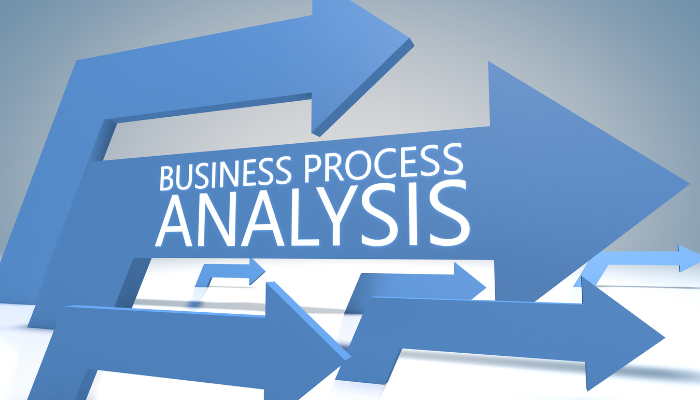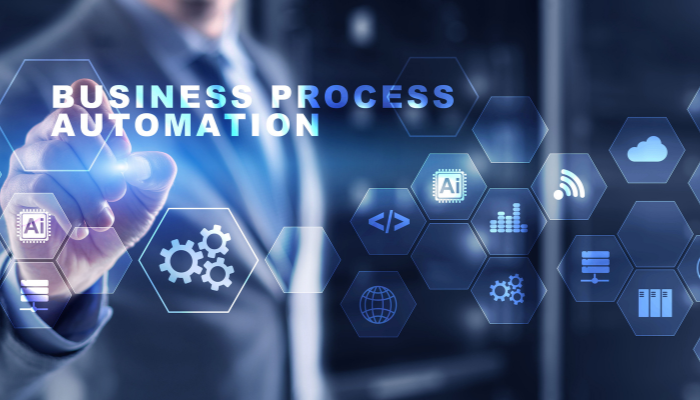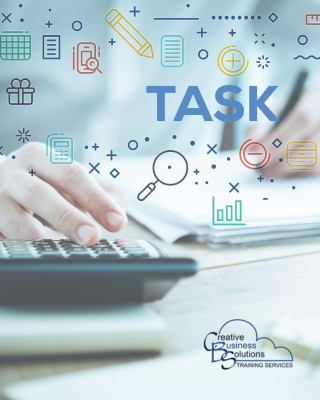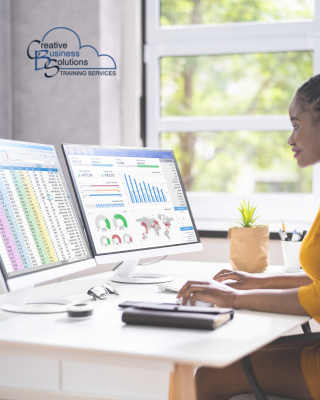
Automation is increasingly becoming a powerful tool for businesses, and accounting and bookkeeping practices are no exception. By leveraging automation, enterprises of all sizes can streamline their processes, increase accuracy, and improve efficiency.
With the help of automated solutions such as robotic process automation (RPA) and machine learning (ML), businesses can save time and resources and do more with less. However, as with any new technology, there are risks that must be taken into account, and organizations should ensure that they understand the benefits and drawbacks before implementing an automation solution.
In this blog, we will explore the potential advantages and disadvantages of automating accounting and bookkeeping operations, how to mitigate risks associated with automation, and tips on getting started.

The Benefits of Automation in Accounting and Bookkeeping Practices
The emergence of automation has been a game-changing technology for the accounting and bookkeeping industry, bringing with it a host of invaluable benefits. In recent years, automated systems have revolutionized how firms store, process, and manage financial information, thereby streamlining these processes considerably. Automation has enabled accountants and bookkeepers to manage their clients' accounts and records more efficiently, providing greater accuracy and speed.
Additionally, automation has helped reduce administrative errors and cut costs associated with manual data entry and reconciliation. Furthermore, with automated systems, firms can now gain access to real-time data that can be utilized to make more informed decisions. Automated systems also provide greater visibility into financial operations, enabling accountants and bookkeepers to monitor their clients' accounts better.
Finally, automation has helped to improve customer service, as automated systems can quickly respond to inquiries and generate reports on demand. Automation has profoundly impacted the accounting and bookkeeping industry, facilitating greater efficiency, accuracy, and visibility that boost productivity and profitability.

Analyzing the Benefits of Automation for Accountants and Bookkeepers
Streamlining Processes
Streamlining processes is a key part of running a successful business, as it enables organizations to become more efficient and increase their productivity. Streamlining involves reducing the number of steps or activities required to complete a task or operation, which can ultimately result in significant cost savings.
Using automation to streamline processes is an increasingly popular strategy for accounting and bookkeeping firms looking to maximize efficiency in their operations. Automation frees up time and resources by automating tedious and mundane tasks, such as data entry, invoicing, payments, reconciliations, reports, and much more. As a result of automated processes that reduce manual inputs and interactions between staff members, firms can focus on providing higher-quality services to their customers.
An organized approach to streamlining processes also has the added benefit of eliminating redundancies and other sources of waste, thereby allowing a company to get the most out of its resources. Streamlined processes can also simplify operations by removing complexity and making tasks easier for employees to complete.
In addition, streamlining through automation helps to reduce the amount of time needed to complete certain activities, enabling a business to respond more quickly and effectively to customer inquiries or other demands. Ultimately, implementing streamlined processes can provide numerous advantages for businesses by improving their overall efficiency and performance while delivering superior customer service.
Enhancing Security
Using automation to enhance security for an accounting or bookkeeping firm is a potent tool that can help protect private and confidential data from unauthorized access. Automation tools can be used to ensure secure data transfer between systems, reduce the risk of human error, and provide advanced detection of potential threats.
Automated processes also allow for increased visibility into system activity, allowing organizations to quickly identify any suspicious behaviour or trends that may indicate malicious activities or attacks. Additionally, automated security solutions can provide real-time alerts based on predetermined criteria, such as unusual user activity or unexpected changes in system parameters.
By leveraging automated tools and technologies, accounting and bookkeeping firms can significantly improve their security posture and maintain a higher standard of protection for their sensitive information.
Reducing Errors and Increasing Accuracy
Automation in accounting and bookkeeping firms is essential for streamlining processes, reducing errors and increasing accuracy. Automation can be implemented through data entry systems, automated reconciliation tools and AI-enhanced analytics.
Using such techniques, accounting teams can quickly and accurately input data into databases and financial systems. This process helps eliminate manual errors caused by inaccurate data entry and saves time due to the speed of the process. Automated reconciliation tools also detect discrepancies between records, allowing for more efficient resolution. Furthermore, AI-enhanced analytics analyze large amounts of account data simultaneously, enabling more accurate predictions through pattern recognition and anomaly detection.
As a result, bookkeeping firms can maximize the accuracy of their accounts while minimizing human errors associated with traditional methods. Ultimately, automation helps reduce error and increase accuracy in an accounting or bookkeeping firm by providing fast and reliable digital solutions that take advantage of cutting-edge technologies like artificial intelligence.

Examining the Risks Associated with Automation
Potential Loss of Human Judgment
Automation in any industry, including the accounting and bookkeeping industry, can pose a risk to businesses due to the potential for loss of human judgment. Although automated systems offer advantages such as improved accuracy and efficiency, they can also lead to oversights that humans could have otherwise identified.
Failing to recognize financial discrepancies, performing incorrect calculations, or overlooking essential details can all result from relying too heavily on automated methods. Additionally, errors in reasoning may occur when an algorithm is faced with tasks outside its pre-programmed parameters.
These mistakes can lead to significant losses for firms if not detected early on, making it essential that human judgment remain an integral part of any automated system. By monitoring results closely and utilizing experienced personnel trained in both manual and automated accounting processes, businesses can minimize the risks associated with automation while still enjoying its benefits.
Costly System Failures
The risk of system failures due to automation is an important concern when designing and implementing digital systems. Automation involves using technology to automate laborious tasks, thereby increasing efficiency and effectiveness. While there are numerous advantages to automation, such as improved accuracy and faster processing times, it also has the potential to cause unexpected errors or malfunctions that can have severe implications for businesses and organizations.
As automated systems grow increasingly complex, the risk of catastrophic failures rises accordingly. System errors can lead to data breaches, financial losses, reputational damage, and other adverse consequences. To mitigate these risks, organizations must ensure their systems are adequately tested and updated regularly with the latest security patches and updates. They should also implement robust authentication protocols and quality assurance measures to guarantee the reliability of their automated processes.
To minimize automation-related system failures, businesses should seek reliable tech partners to provide analysis, risk assessment and performance monitoring services. Working with a professional team can ensure effective implementation of changes for successful long-term outcomes.
Increased Vulnerability to Cybersecurity Breaches
Automation is a powerful tool that has revolutionized how we do business and delivered many beneficial outcomes; however, it also presents unique challenges regarding cybersecurity. Automation increases vulnerability to cybersecurity breaches by automating tasks and processes traditionally done manually, exposing systems to malicious cyber-attacks.
Furthermore, automation can create gaps in security due to its reliance on pre-programmed instructions that don't account for changes or potential threats. This concern leaves systems vulnerable to attack from sophisticated cybercriminals who exploit the lack of oversight and security measures. Additionally, automation requires access to vast amounts of data, creating another vulnerability point since automated systems cannot identify suspicious or malicious behaviour.
To protect against these threats and keep businesses safe, organizations must adopt comprehensive cybersecurity strategies that account for how automation can be used both safely and securely. These measures include implementing robust authentication protocols, regular system audits, and educating on the dangers of automation-based vulnerabilities.

Mitigating Risk Through Strategic Implementation Strategies
Investing in Robust Software Solutions
Investing in robust software solutions can mitigate the risk of automation by providing reliable systems that drive process efficiency and enable better decision-making. Choosing the right tools for your automation can help reduce the potential threats by minimizing outside integrations.
Automation is a powerful tool but can also come with inherent risks if not properly managed. By incorporating the right kind of software solutions into your workflow, you can ensure that automation is used strategically and effectively. Such solutions can monitor system performance and output to identify any potential issues before they become a problem. With the right software, organizations can maintain control over automated processes while simultaneously improving productivity and reducing human errors associated with manual workflows.
Additionally, investing in robust software solutions provides access to valuable data insights that can be used to inform future decisions about automation and identify areas for improvement. In short, investing in the right software solutions helps minimize automation risks while empowering organizations to make the most out of their automated processes.
Establishing Comprehensive Training Protocols
The increasing automation of workplace processes brings with it a range of challenges that businesses must address to ensure the smooth functioning of operations. One key area that should be addressed is the development of comprehensive training protocols to mitigate the risk associated with automation.
Establishing such protocols involves implementing specific strategies and procedures designed to ensure effective communication and learning between automated systems and people. This strategy should include measures such as documenting workflows, standardizing processes, providing appropriate technology training, and offering ongoing support for employees during the transition process.
Additionally, ensuring employees access relevant data on topics such as legal regulations and job requirements can reduce automation risks. By taking these precautions, organizations can create an effective environment where machines work together with people safely and efficiently to reach common goals.
Creating Proactive Maintenance Plans
It is essential to create proactive maintenance plans tailored to the automated system's specific needs and capabilities to mitigate the risk of automation. This process should include regular inspections, tests, and replacements or updates to ensure that the system remains in optimal condition and that any issues are quickly identified and addressed. Proactive maintenance plans can also minimize downtime by providing early warning signals when an issue may arise.
Planning for any failure ahead of time is a crucial part of addressing risk mitigation; this includes assessing potential scenarios and outlining how they will be managed if and when they arise. By creating detailed strategies upfront that address all aspects of an automated system, organizations can safeguard against disruption caused by unexpected breakdowns while optimizing efficiency over time.


























